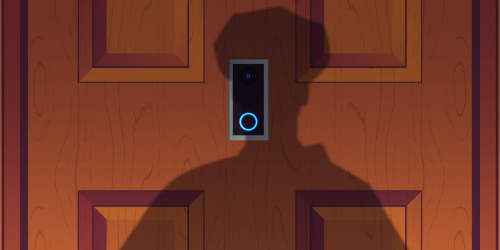Given the recent revelations about just how pervasive the government's electronic surveillance has been, it's no surprise these surveillance programs are popping up in criminal cases, as defense attorneys are finding gaps in how the government collected particular pieces of electronic evidence on their clients. A new amicus brief we filed today with the ACLU and the ACLU of Northern California in a drug case in San Francisco federal district court asks the court to order the government to fill these gaps.
The case involves 20 co-defendants charged with transporting and distributing drugs from San Francisco to Seattle. During the investigation, the government obtained records on over 700,000 phone calls made by more than 600 different phone numbers, including records such as numbers dialed or dialing in, the date, time and duration of the calls, and in some cases location information. Yet despite the sheer volume of calls at issue, the government produced to the defense attorneys court orders authorizing collection on only 52 of these phone numbers. The enormous discrepancy between the call data actually collected and the court orders authorizing the collection raises serious questions about whether the government took advantage of the controversial surveillance programs recently leaked to the press.
In June, details of the NSA's bulk telephone records collection program was published by The Guardian. Then in August, Reuters reported about the NSA's practice of funneling information to the Drug Enforcement Administration's Special Operations Division ("SOD"). In turn, the DEA and SOD would use the information to generate its own independent leads and then deliberately omit the NSA's involvement in reports and affidavits, effectively "laundering" the intelligence. Then, in September, the New York Times reported that DEA agents had direct access into AT&T's database known as "Hemisphere" that contained millions of records about phone calls dating back to 1987. Like SOD, agents are deliberately instructed to omit referencing the Hemisphere program in court documents.
With all this information coming to light, criminal defendants are fighting to uncover what type of electronic surveillance really occurred in their criminal cases, and how information was obtained by the government. In our amicus brief, we ask a federal district court to order the government to provide more information about how it potentially used these surveillance programs in criminal cases.
For example, investigators in the San Francisco drug case were able to locate a phone number for a suspect only two days after his prior number had been disconnected. The reports turned over to defense attorneys indicated that the information was obtained by a confidential source, and that may very well be true. But this ability to connect an old phone number with a new one sounds exactly like what the Hemisphere program is capable of doing. Yet, there's no mention of the Hemisphere program in any of the investigative reports, a glaring omission that is consistent with the DEA's directive to agents to "never refer to Hemisphere in any official document" and instead lie that the "results were obtained from an AT&T subpoena."
Deliberately omitting this information is all part of DEA's act of, in their own words, "protecting the program." As we explain in our amicus brief, this deliberate omission runs afoul of the Fifth Amendment's guarantee of due process. Specifically, under Brady v. Maryland, the government must disclose "material" evidence that is favorable to the defense. "Material" means the evidence could affect the outcome of the criminal proceeding and Brady's obligation extends to "material" facts relevant to raising Fourth Amendment challenges. Here, understanding if and how these surveillance programs were used would be "material" for three reasons.
First, if these programs were used to obtain evidence against a criminal defendant, the defendant must be given an opportunity to challenge that evidence. They couldn't do so without the full facts of whether the programs were used, and how. Second, the government must turn over evidence that bears on the credibility of a witness. A witness' credibility is an important factor in determining whether probable cause exists, and that obligation is not just reserved to the government's use of human witnesses. The Ninth Circuit Court of Appeals (which has jurisdiction on the federal court in San Francisco) has explained that these discovery obligations require the government to disclose evidence of a drug detecting dog's reliability. We believe the same obligations extend to electronic surveillance too. Third, in Franks v. Delaware, the US Supreme Court ruled that a criminal defendant has a right to challenge false or deliberately omitted statements in a search warrant affidavit. In turn, the Ninth Circuit has held Brady requires prosecutors to disclose evidence that could be used to impeach the testimony of an officer at a suppression hearing. Thus, to the extent officers used the program, it would impeach their claims that they relied on an administrative subpoena or a confidential source to get the information.
While it may seem like connecting these surveillance programs to domestic criminal cases is "highly hypothetical," the operation of these programs outside of the public eye, coupled with the directive that agents utilizing SOD and Hemisphere hide the existence of the programs from even judges and prosecutors means courts must require the government to dig deeper and untangle how electronic surveillance actually occurred in a criminal case. The Supreme Court in Franks noted the Fourth Amendment “would be reduced to a nullity if a police officer was able to use deliberately falsified allegations to demonstrate probable cause, and, having misled the magistrate, then was able to remain confident that the ploy was worthwhile." We hope the Court here and in other criminal cases orders the government to come clean.











